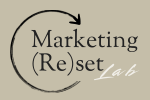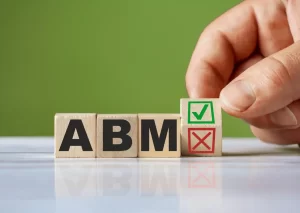Ever stared at your marketing to-do list feeling like you’re about to climb Mount Everest in flip-flops? LinkedIn posts, email newsletters, content marketing, SEO, paid ads… I get it. After two decades in B2B marketing, I’ve learned that trying to do everything at once is the fastest route to marketing paralysis.
Why starting small actually works
Think of marketing like learning flamenco (yes, I’m a dance nerd). You don’t start with complex choreography – you master the basic steps first. The same applies to your marketing strategy.
Let me share a recent example: A B2B tech startup came to me overwhelmed by their six different marketing channels. Their content was inconsistent, their team was burned out, and their results? Well, let’s just say they weren’t doing the happy dance.
We scaled back to focus solely on LinkedIn and their blog. Within three months, we saw great improvement on their engagement and traffic to website. How? By mastering the basics before attempting the advanced moves.
Your 3-step framework to start small
1. Choose your power move
Pick ONE primary channel based on three factors:
- Where your ideal clients actually hang out (not where you think they should be)
- What you can realistically maintain (be brutally honest here)
- What plays to your strengths (if you hate writing, a blog-first strategy isn’t your friend)
Real example: A SaaS client chose LinkedIn because their target audience (B2B tech leaders) was active there, and their CEO enjoyed writing thought leadership content. Result? True engagement and direct messages from their target audience. (Personally, I don’t believe in lead generation through organic LinkedIn content. For me, social media is a brand building channel, but these things do happen sometimes).
2. Create your minimum viable marketing plan
Focus on:
- One primary channel (yes, just one)
- One type of content (master it before diversifying)
- One clear call-to-action (stop confusing your audience)
- One key metric to track (that actually matters to your business)
3. Execute, learn, then expand
Commit to your chosen strategy for at least 90 days. Why? Because marketing is like compound interest – it takes time to see results, but when it kicks in, it really kicks in.
What “starting small” actually looks like
Let’s get practical. Here’s what a focused LinkedIn strategy looks like:
- 3 focused posts per week (not 15 random ones)
- 20 minutes daily engagement (actual conversations, not just likes)
- 1 thought leadership piece monthly (at least. The ideal here would be weekly, to build SEO)
- Track: Engagement rate and lead quality (not vanity metrics)
When to scale up
You’re ready to add more when:
- Your chosen channel consistently performs
- You have systems in place (not just winging it)
- You can maintain quality while adding quantity
- You have data showing what works (and what doesn’t)
Remember: It’s better to be outstanding at one thing than mediocre at everything. Trust me, I’ve seen both sides of this equation, and the focused approach wins every time.
Want more practical marketing insights? Subscribe to the Reset Lab newsletter. No fluff, just real talk about what actually works.




